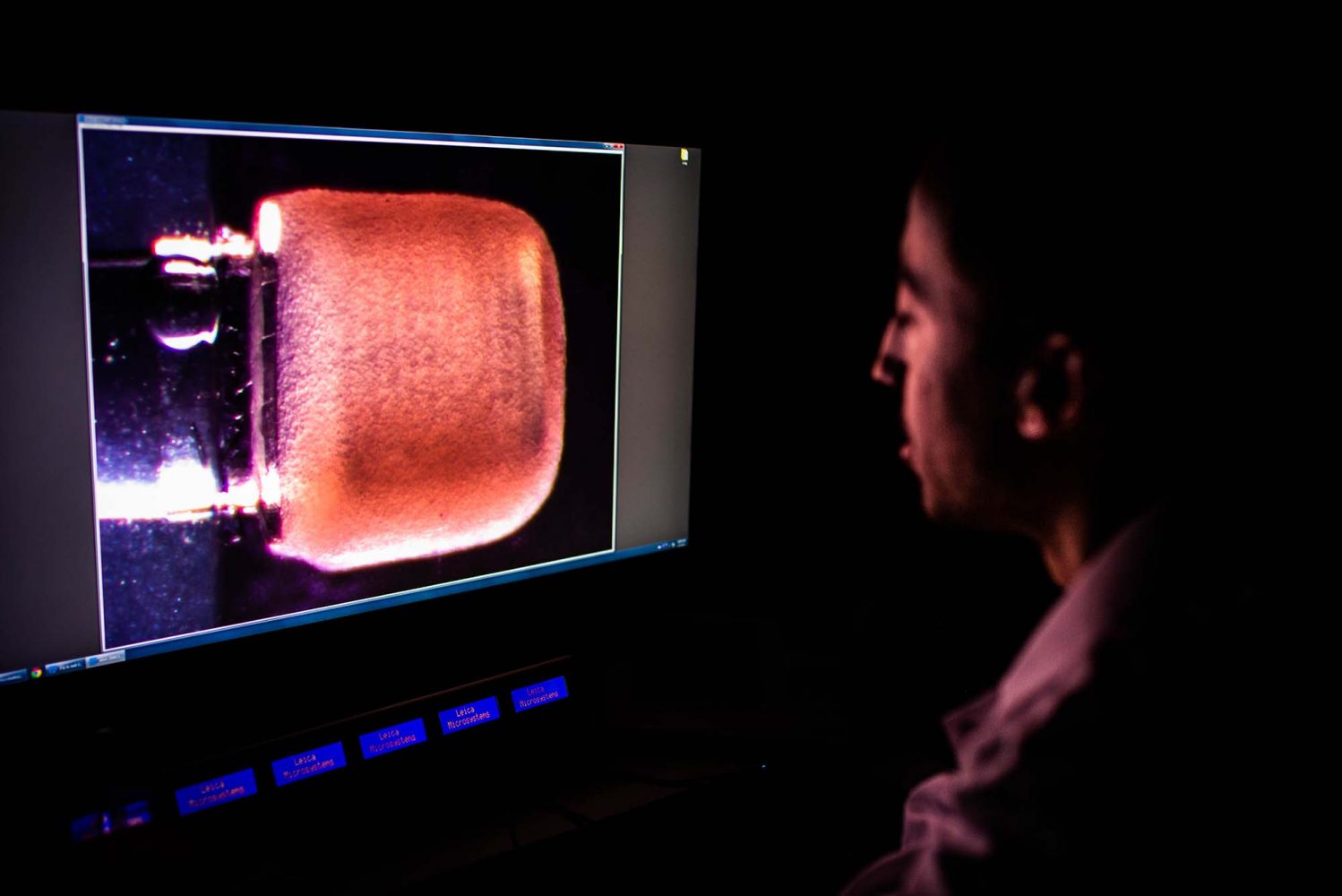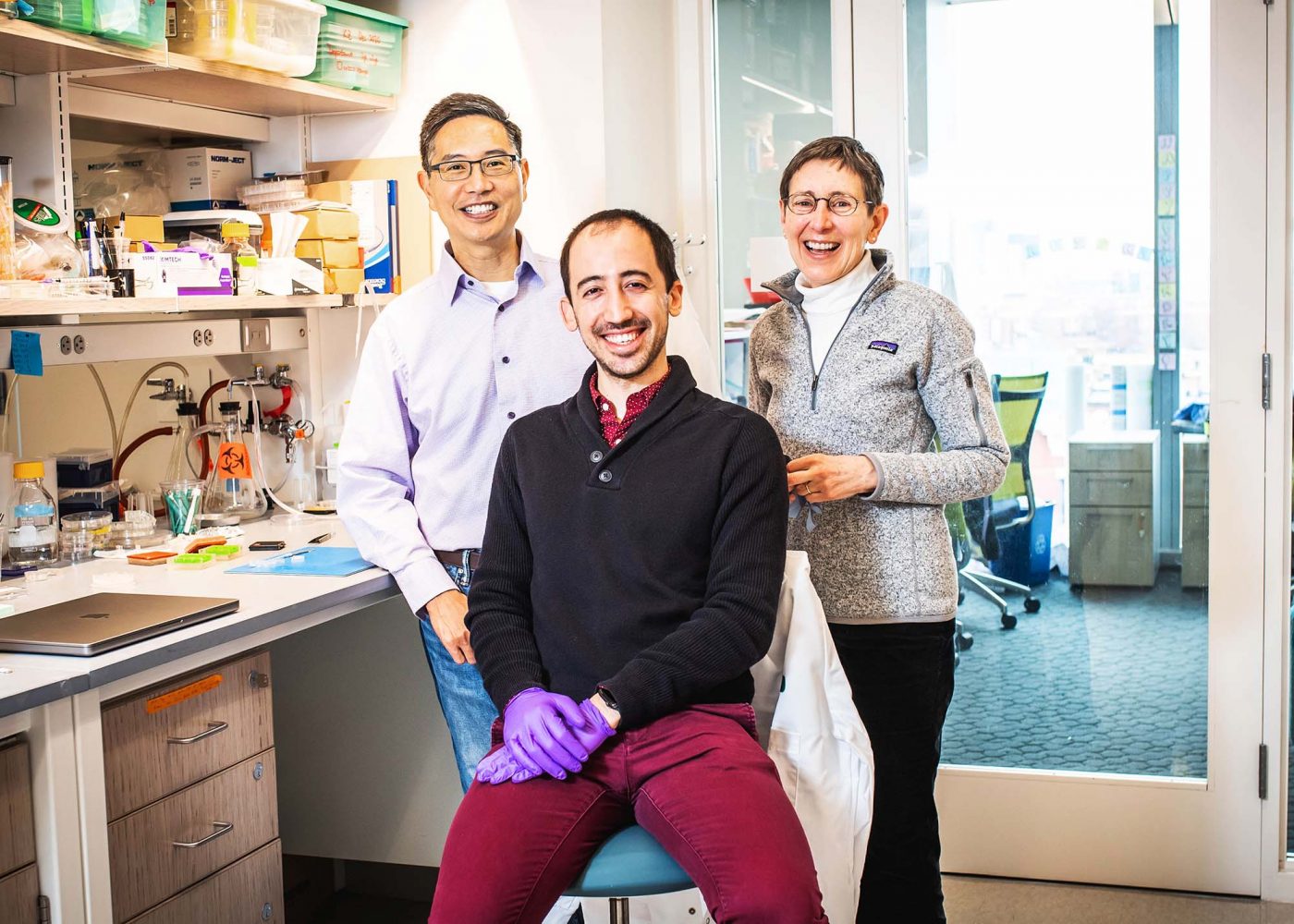New Tool Advances Heart Disease Research: Miniature Replica of the Human Heart
Outcome/Accomplishment
There has been no safe way to get the close-up views of the human heart that are needed for testing new heart disease treatments—until now. A Boston University (BU)-led interdisciplinary team of engineers, biologists, and geneticists has developed a miniature replica of a heart chamber from a combination of nanoengineered parts and human heart tissue that beats by itself, just like the real thing. This trail-blazing research project, which could also pave the way for building lab-based versions of other organs from lungs to kidneys, is being supported by the National Science Foundation (NSF)-funded Engineering Research Center (ERC) in Cellular Metamaterials (CELL-MET), headquartered at BU.
Impact/Benefits
Heart disease is the number one cause of death in the United States. When it is functioning properly, the heart's two top and two bottom chambers keep your blood flowing so that oxygen-rich blood circulates and feeds your body. When you have heart disease, the arteries that carry blood away from your heart can narrow or become blocked, valves can leak or malfunction, the heart muscle can thin or thicken, or electrical signals can short, causing too many—or too few—beats. The new gadget—nicknamed miniPUMP, and officially known as the cardiac miniaturized Precision-enabled Unidirectional Microfluidic Pump, is an important step toward CELL-MET's goal to regenerate diseased human heart tissue, building a community of scientists and industry experts to test new drugs and create artificial implantable patches for hearts damaged by heart attacks or disease.
Explanation/Background
"The heart experiences complex forces as it pumps blood through our bodies," says Christopher Chen, the BU William F. Warren Distinguished Professor and a BU College of Engineering professor of biomedical engineering. "And while we know that heart muscle changes for the worse in response to abnormal forces—for example, due to high blood pressure or valve disease—it has been difficult to mimic and study these disease processes. This is why we wanted to build a miniaturized heart chamber."
The miniPUMP isn't much bigger than a postage stamp but offers much potential for testing new heart disease treatments. Built to act like a human heart ventricle, or muscular lower chamber, its custom-made components are fitted onto a thin piece of 3D-printed plastic. There are miniature acrylic valves, opening and closing to control the flow of liquid—water, in this case, rather than blood—and small tubes, funneling that fluid just like arteries and veins. And beating away in one corner, the muscle cells that make heart tissue contract are made using stem cell technology. "There are so many research applications," says Chen. "In addition to giving us access to human heart muscle for studying disease and pathology, this work paves the way to making heart patches that could ultimately be used for someone who has a defect in their current heart."
"We chose to work on heart tissue because of its particularly complicated mechanics, but we showed that, when you take nanotechnology and marry it with tissue engineering, there's potential for replicating this for multiple organs," says Alice White, a BU College of Engineering professor and chair of mechanical engineering. The next immediate goal for the miniPUMP team? To refine the technology. They also plan to test ways to manufacture the device without compromising its reliability.
Location
Boston, MassachusettsStart Year
Biotechnology and Healthcare
Biotechnology and Healthcare
Lead Institution
Core Partners
Fact Sheet
Outcome/Accomplishment
There has been no safe way to get the close-up views of the human heart that are needed for testing new heart disease treatments—until now. A Boston University (BU)-led interdisciplinary team of engineers, biologists, and geneticists has developed a miniature replica of a heart chamber from a combination of nanoengineered parts and human heart tissue that beats by itself, just like the real thing. This trail-blazing research project, which could also pave the way for building lab-based versions of other organs from lungs to kidneys, is being supported by the National Science Foundation (NSF)-funded Engineering Research Center (ERC) in Cellular Metamaterials (CELL-MET), headquartered at BU.
Location
Boston, MassachusettsStart Year
Biotechnology and Healthcare
Biotechnology and Healthcare
Lead Institution
Core Partners
Fact Sheet
Impact/benefits
Heart disease is the number one cause of death in the United States. When it is functioning properly, the heart's two top and two bottom chambers keep your blood flowing so that oxygen-rich blood circulates and feeds your body. When you have heart disease, the arteries that carry blood away from your heart can narrow or become blocked, valves can leak or malfunction, the heart muscle can thin or thicken, or electrical signals can short, causing too many—or too few—beats. The new gadget—nicknamed miniPUMP, and officially known as the cardiac miniaturized Precision-enabled Unidirectional Microfluidic Pump, is an important step toward CELL-MET's goal to regenerate diseased human heart tissue, building a community of scientists and industry experts to test new drugs and create artificial implantable patches for hearts damaged by heart attacks or disease.
Explanation/Background
"The heart experiences complex forces as it pumps blood through our bodies," says Christopher Chen, the BU William F. Warren Distinguished Professor and a BU College of Engineering professor of biomedical engineering. "And while we know that heart muscle changes for the worse in response to abnormal forces—for example, due to high blood pressure or valve disease—it has been difficult to mimic and study these disease processes. This is why we wanted to build a miniaturized heart chamber."
The miniPUMP isn't much bigger than a postage stamp but offers much potential for testing new heart disease treatments. Built to act like a human heart ventricle, or muscular lower chamber, its custom-made components are fitted onto a thin piece of 3D-printed plastic. There are miniature acrylic valves, opening and closing to control the flow of liquid—water, in this case, rather than blood—and small tubes, funneling that fluid just like arteries and veins. And beating away in one corner, the muscle cells that make heart tissue contract are made using stem cell technology. "There are so many research applications," says Chen. "In addition to giving us access to human heart muscle for studying disease and pathology, this work paves the way to making heart patches that could ultimately be used for someone who has a defect in their current heart."
"We chose to work on heart tissue because of its particularly complicated mechanics, but we showed that, when you take nanotechnology and marry it with tissue engineering, there's potential for replicating this for multiple organs," says Alice White, a BU College of Engineering professor and chair of mechanical engineering. The next immediate goal for the miniPUMP team? To refine the technology. They also plan to test ways to manufacture the device without compromising its reliability.


